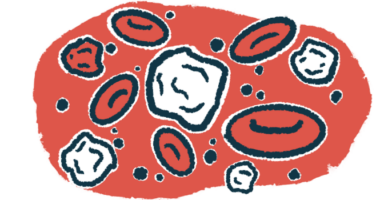Thanks to her LEMS treatment, my daughter is thriving
Thoughts about disorder once consumed me, but not today

I often think about the phrase “no news is good news” when I haven’t heard from my son in a while. He lives across the country, and if he has a problem or needs to discuss something, I know he’ll call me. If I don’t hear from him for a week or two, I assume everything is fine.
I’ve been absent from writing this column for some time, and the same sentiment applies to me and my family. We’re doing well. My 20-year-old daughter, Grace, who was diagnosed with Lambert-Eaton myasthenic syndrome (LEMS) at the age of 15, is living a full life. She is attending college, working, and maintaining a robust social life. She’s doing better than we ever thought possible after her diagnosis.
In our experience, once LEMS is under control, not much changes. Grace hasn’t had any flare-ups recently, we haven’t had to adjust the dosage of her medication, and her overall treatment plan has remained consistent for years.
The neurologist said Grace has “near-normal” strength for her age, her reflexes have returned, and many of her symptoms have subsided.
There was a time when LEMS consumed my thoughts. It permeated every aspect of my life as I watched my daughter’s health deteriorate before my eyes. Our days were filled with doctor appointments, phone calls to insurance companies, and physical therapy sessions. In my downtime, I’d scour the internet for any information that might give me insight into life with LEMS.
I never thought there would come a time when I wouldn’t be thinking about LEMS. Yet, here we are. Months have passed since I last wrote a column because I didn’t know what to share. My goal in writing here is to encourage and connect with other LEMS patients and caregivers like me. I began to wonder, “Do I have anything of value to contribute to this space anymore?”
Still, I find myself drawn back to this community time and again; it holds a special place in my heart. This is where I found comforting words when we faced cancer screenings and painful electromyography tests. I’ve received advice, encouragement, direction, and purpose through this little column.
This space has allowed me and others to say, “Me, too.” It has provided us with a voice within the rare disease community and has hopefully helped others feel less alone on their LEMS journey.
So I’ll continue to write about all that I am learning as I watch my daughter transition from childhood into adulthood with a rare disease. I hope to help just one person. For that one life, it could make all the difference.
Note: Lambert-Eaton News is strictly a news and information website about the disease. It does not provide medical advice, diagnosis, or treatment. This content is not intended to be a substitute for professional medical advice, diagnosis, or treatment. Always seek the advice of your physician or other qualified health provider with any questions you may have regarding a medical condition. Never disregard professional medical advice or delay in seeking it because of something you have read on this website. The opinions expressed in this column are not those of Lambert-Eaton News or its parent company, Bionews, and are intended to spark discussion about issues pertaining to Lambert-Eaton myasthenic syndrome.







Jessica Guzman
My 16yo daughter is suffering from multiple rare chronic autoimmune inflammatory diseases. She had underlying health issues, suffering from abdominal pains, chronic constipation, and headaches since 5yo. She began declining in her health at 14yo in 2022, the first year back to school on campus. Her diagnosis include: Dysautonomia, Sjogren's, severe Dysmotility, Endometriosis, LEMS. She continues to decline despite having tried every medication that can potentially improve her predicament including IVIG every 3 weeks, low dose naltrexone (not tolerated), Firdapse (not tolerated), Plaquinol (not tolerated). I am going to look into Ruzurgi and see if she can obtain it. I also want to look into the Pediatric Canadian Hospital "Sick Kids" as they ranked #1 worldwide in rare diseases. I am interested in seeing if they would be able to help my daughter, or collaborate with our current team at UCSF. My daughter has high aspirations in life, but is limited in her daily routine at this point in time. She wakes up already depleted of energy before her day has even begun. I'm so happy to hear Grace is living her best life, and pursuing her dreams. I will never give up searching for effective treatment, so that my daughter can improve her quality of life. She has been on home hospital for one year now, and she may have to graduate high school via this format of learning, based off of her health conditions at this time. This would include being able to socialize with her best friend, leaving the house to go somewhere other than medical appointments. We don't know where to turn. What caused all of her inflammation? Was it contracting the COVID virus, then getting the vaccine following having had the virus? Did this kick start her immune system to attack itself? We may never know the root cause, and I would be able to accept this. I just want her to get better. Can you or anyone else help my daughter?